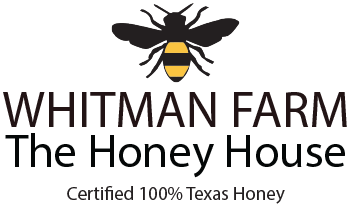The History of the Honey House
Back in the dark ages, the early 60’s, one of my early jobs was working for a contractor that was clearing the right of way for high power transmission lines. He was tasked to clear a 100 foot clear-cut path through the woods. There were a lot of men cutting down trees and clearing out the stumps. My job was to run an ATV loaded with water and other supplies to keep the crew hydrated in the summer heat. There were a dozen men with chain saws and just an many others running chippers to grind up all the wood. There was a lot of noise!
The reality was there were bees in some of the trees, so sometimes the men would have to run from the bees as trees were being cut down. The boss thought that the solution was to douse the bees with gasoline and burn them out. So at 16, I thought I could save the world by saving the bees. I had some experience with bees because my dad had a blueberry farm and had bees there.
I then started removing the bees from the downed trees and by the end of the summer, I had 6 hives rescued. These 6 hives were moved to Louisiana to increase the hives taking care of my father’s blueberries. Then I went off to college.
After my father’s death, I inherited the property where the blueberries used to be. All my bee keeping equipment was still there. I purchased 3 colonies and started again in Louisiana. I eventually moved to Willis, Texas, and left my son living in the Louisiana blueberry farm with the bees. However, he did not want to deal with them, so I moved the bees to my 7 acres in Willis. I joined the Beekeepers Association.. it was not long before I became a mentor in the group. After a couple of years, I became vice president of that group.
I now belong to both the Montgomery county and Walker county beekeepers associations, and I am a mentor in both. I still have the bee rescue equipment, but no longer climb ladders to do so.
Having hives and learning about their management increased the number of hives I owned as the hives began to split. A strong hive can separate on its own into two hives and the queen-less hive will create a new queen. This type of natural split is called a walk away split. Alternatively, if the hive boxes are completely full, the hive can be divided by the beekeeper; however, you have to inspect the original hive to make sure all the necessary points to make the split successful are addressed.
Year on in Willis, the three beehives became 5. The year after that, five became 10. I purchased more equipment, and a bigger extractor. The second year, the harvest was 215 pounds - almost 18 gallons. We have exceeded the 90 hives and continue to expand.
However, the law says I need a license to sell even one jar of honey, so five years ago, the Montgomery Beekeepers Association talked to the state representatives about the cottage industry rules that would not allow us to sell honey. The law was changed to cover beekeeper under the Cottage laws so that we can sell up to two hundred gallons and not have to have a license. This came too late for me because I was well past that number. So, four years ago, The Honey House was formed and applied to the state of Texas for a food manufacturing license. We also applied to Montgomery to get a food permit like restaurants do.
In 2017, we established a separate commercial kitchen and produced over 1200 gallons of honey. Now we also make over 20 flavors of jam and jellies, and we added a product line of candles and lotion bars.
Remember to make sure the honey you consume is local (less than 50 miles) to get the allergy benefits. If you decide to buy honey at a road stop, make sure to ask the vendor where he keeps his bees. Most of the honey sold on the side of the road is purchased from commercial beekeepers and is then repackaged, thus is is not local honey.
Ronnie Whitman, beekeeper
Schedule a visit to learn more about our products and bees!
